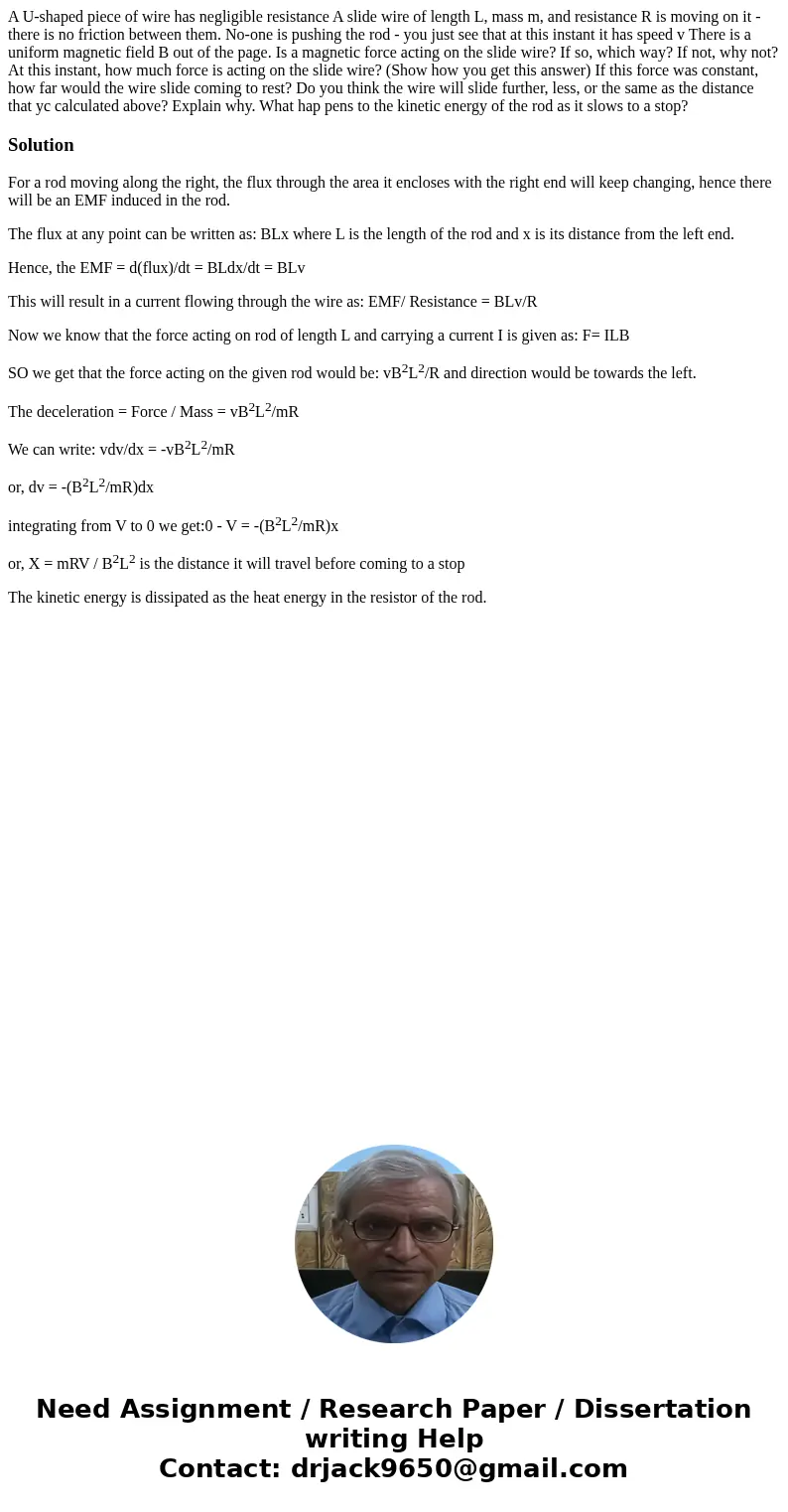A Ushaped piece of wire has negligible resistance A slide wi
Solution
For a rod moving along the right, the flux through the area it encloses with the right end will keep changing, hence there will be an EMF induced in the rod.
The flux at any point can be written as: BLx where L is the length of the rod and x is its distance from the left end.
Hence, the EMF = d(flux)/dt = BLdx/dt = BLv
This will result in a current flowing through the wire as: EMF/ Resistance = BLv/R
Now we know that the force acting on rod of length L and carrying a current I is given as: F= ILB
SO we get that the force acting on the given rod would be: vB2L2/R and direction would be towards the left.
The deceleration = Force / Mass = vB2L2/mR
We can write: vdv/dx = -vB2L2/mR
or, dv = -(B2L2/mR)dx
integrating from V to 0 we get:0 - V = -(B2L2/mR)x
or, X = mRV / B2L2 is the distance it will travel before coming to a stop
The kinetic energy is dissipated as the heat energy in the resistor of the rod.

 Homework Sourse
Homework Sourse